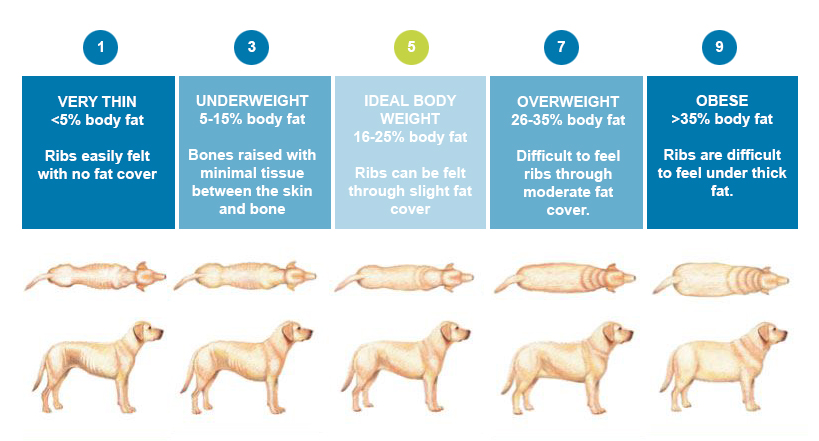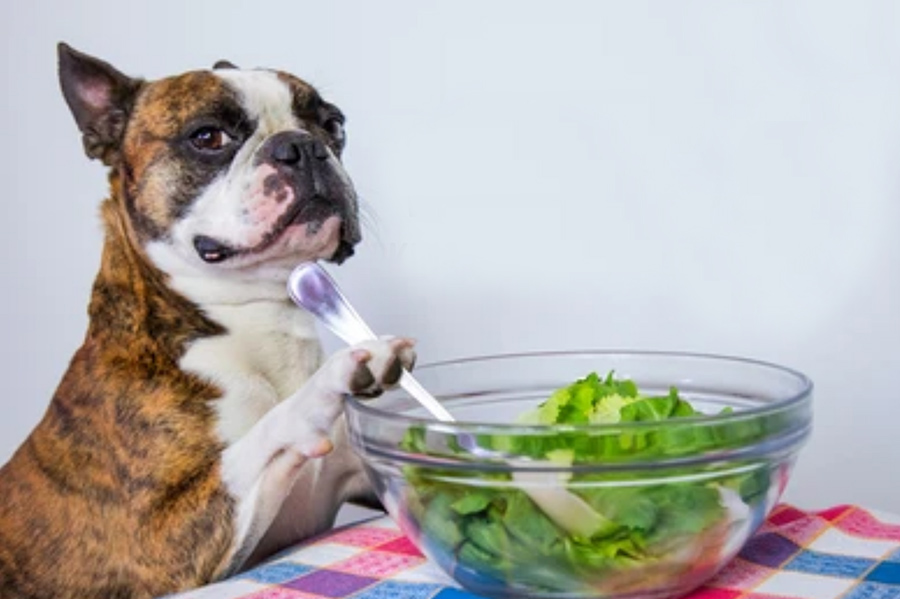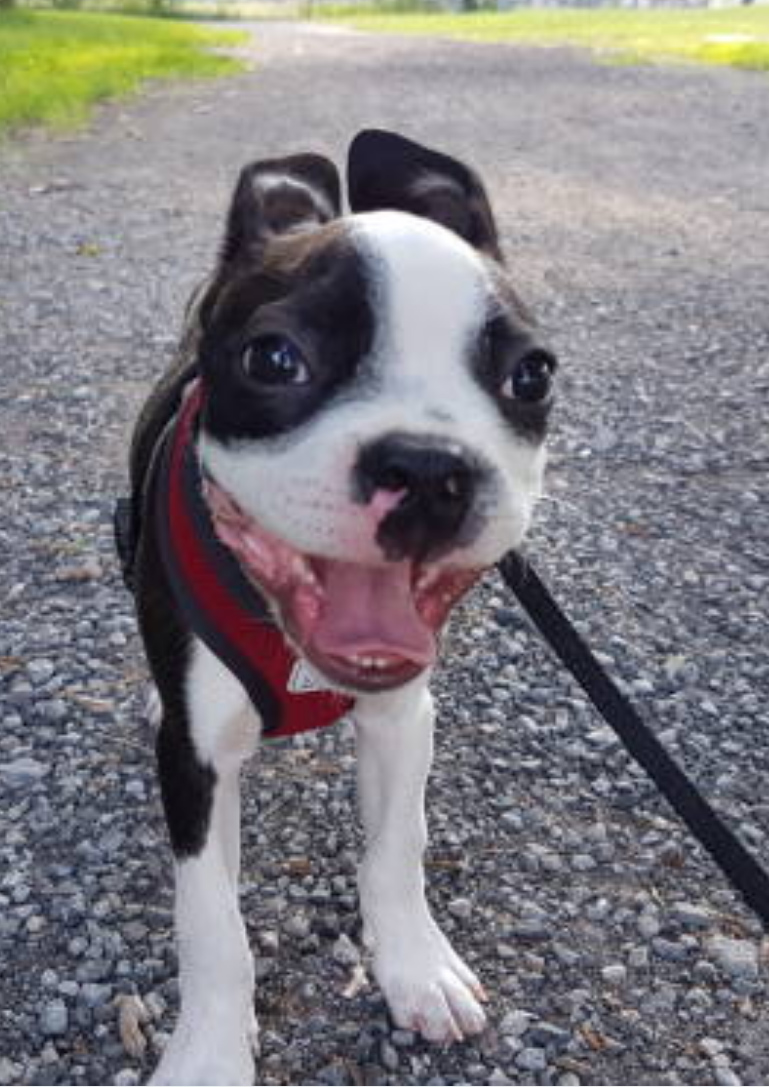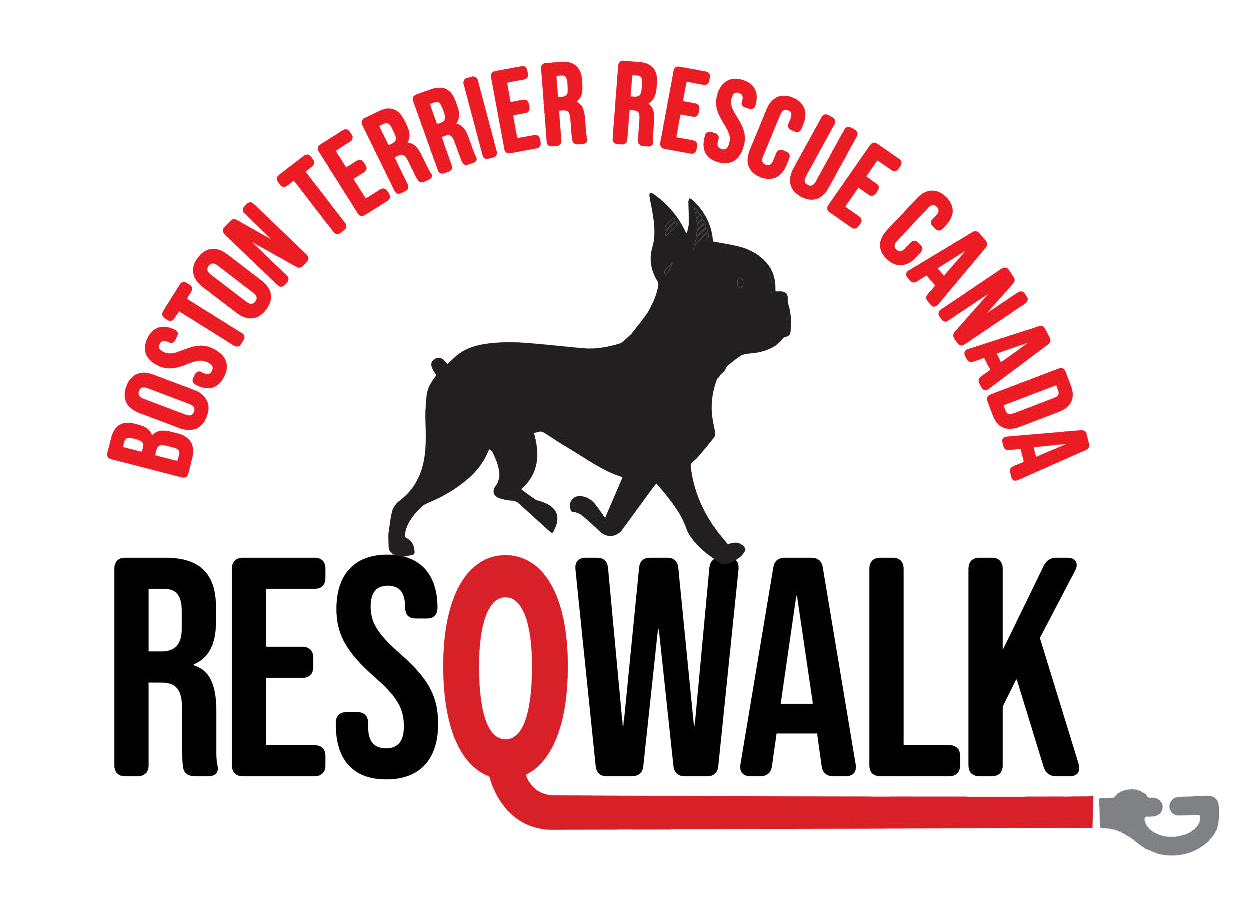There’s a reason your veterinary teams spend so much time talking about weight as it relates to canine health. It can cause a myriad of general health and mobility issues, including:
- cancer
- diabetes
- heart disease
- hypertension
- osteoarthritis
- joint degeneration
- urinary bladder stones
- less heat tolerant
… and so on!
Extra weight can have life-threatening consequences for brachycephalic dogs like the Boston terrier – causing worsening breathing problems, exercise intolerance, sleep disorders, luxating patella, and even collapse.
The Canadian Veterinary Medical Association says that pet obesity is rising, with an estimated 50-60% of pets in Canada diagnosed as overweight or obese. That’s over half! Keep reading to find out how you can help your dog stay slim and trim.
Is my dog obese?
If you think your dog may be overweight, ‘The Dog Body Condition Scale‘ is a super handy way to evaluate. You’ve likely seen it in your vets’ office:

It is a relatively easy way to help determine if your dog is under or overweight without weighing them. A rating of five is considered ideal, and anything above would be grounds to start kibble counting.
How to put your dog on a diet:
Getting a canine to drop some lbs is just like humans:
less intake (eat less) + more output (burn calories) = weight loss
If you haven’t already, take a look at the back of your dog’s food, which should contain feeding guidelines. Double-check you aren’t overfeeding your dog. If you are within the guidelines, but your baby still has back, you may have to shift to a special weight-loss diet.
One of the most common culprits for obesity in dogs is treats! Be mindful of the extra calories in treats when determining your dog’s daily meal requirements. If you give a lot of training treats on a particular day, decrease the amount fed at meal time.
To help reduce calories and help your dog feel more full, add a small amount of low-calorie vegetables to their dinner, such as frozen sliced carrots, broccoli, green beans, or asparagus. You can also feed your dog in a treat ball, puzzle or slow feeder to make meal time last longer.
Next, get your dog walking farther, more often. Dr. Ernie Ward DVM, who founded the Association for Pet Obesity Prevention (APOP), recommends the following routine to get you and your pooch started:
 Week 1: 30 minutes total – 10 minutes brisk followed by 20 minutes casual pace
Week 1: 30 minutes total – 10 minutes brisk followed by 20 minutes casual pace
Week 2: 30 minutes total – 15 minutes brisk followed by 15 minutes casual pace
Week 3: 30 minutes total – 20 minutes brisk followed by 10 minutes casual pace
Week 4: 35-40 minutes total – 30 minutes brisk followed by 5-10 minutes casual pace
Week 5+: 35-60 minutes total – Try to do two 20-30 minute walks per day: 15-25 minutes brisk, followed by 5 minutes casual pace.
Last but not least, be sure to loop your vet in on your plans. The reason is two-fold: weight gain can be caused by underlying health issues, so best to rule them out. But most importantly, they can help you remain resilient against those puppy eyes you will undoubtedly be seeing when you lower their food intake!

Connect with other walkers across the country by joining our Boston Terrier Rescue Canada ResQwalk Team on Facebook! Improve your dog’s fitness, and your own, while earning money and other helpful resources for BTRC!

